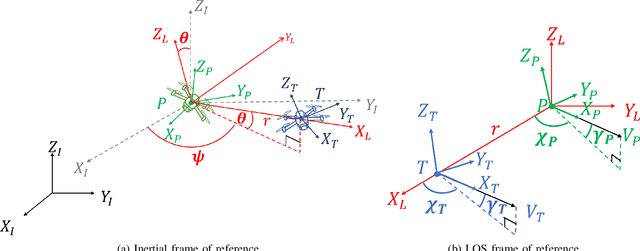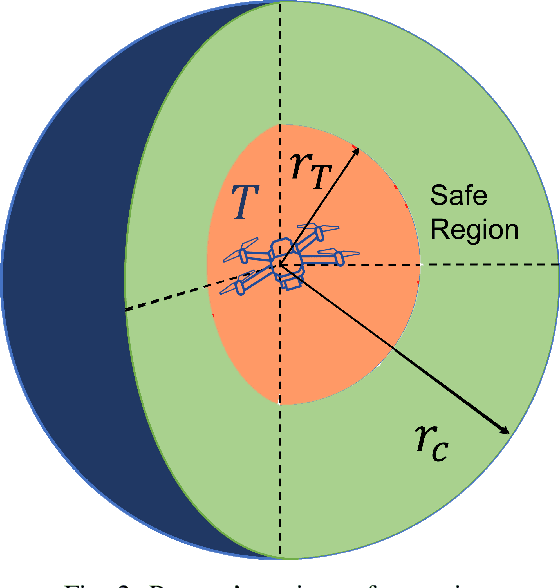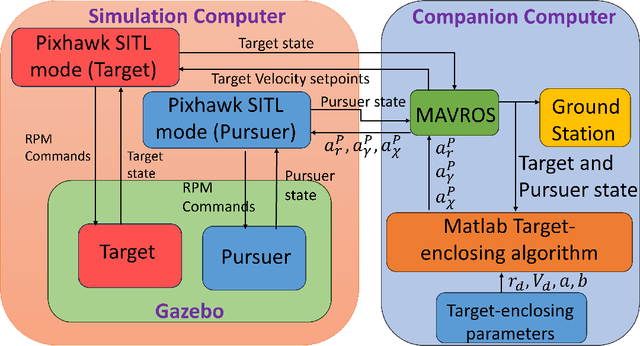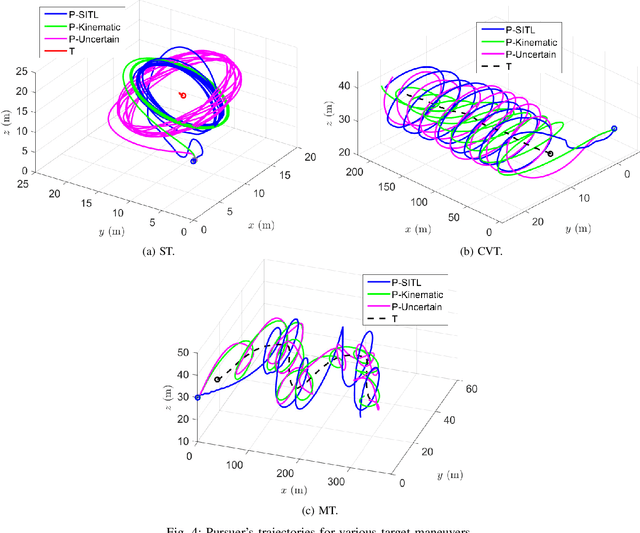Praveen Kumar Ranjan
3D Guidance Law for Maximal Coverage and Target Enclosing with Inherent Safety
Apr 25, 2024



Abstract:In this paper, we address the problem of enclosing an arbitrarily moving target in three dimensions by a single pursuer, which is an unmanned aerial vehicle (UAV), for maximum coverage while also ensuring the pursuer's safety by preventing collisions with the target. The proposed guidance strategy steers the pursuer to a safe region of space surrounding the target, allowing it to maintain a certain distance from the latter while offering greater flexibility in positioning and converging to any orbit within this safe zone. Our approach is distinguished by the use of nonholonomic constraints to model vehicles with accelerations serving as control inputs and coupled engagement kinematics to craft the pursuer's guidance law meticulously. Furthermore, we leverage the concept of the Lyapunov Barrier Function as a powerful tool to constrain the distance between the pursuer and the target within asymmetric bounds, thereby ensuring the pursuer's safety within the predefined region. To validate the efficacy and robustness of our algorithm, we conduct experimental tests by implementing a high-fidelity quadrotor model within Software-in-the-loop (SITL) simulations, encompassing various challenging target maneuver scenarios. The results obtained showcase the resilience of the proposed guidance law, effectively handling arbitrarily maneuvering targets, vehicle/autopilot dynamics, and external disturbances. Our method consistently delivers stable global enclosing behaviors, even in response to aggressive target maneuvers, and requires only relative information for successful execution.
Self-organizing Multiagent Target Enclosing under Limited Information and Safety Guarantees
Apr 06, 2024Abstract:This paper introduces an approach to address the target enclosing problem using non-holonomic multiagent systems, where agents autonomously self-organize themselves in the desired formation around a fixed target. Our approach combines global enclosing behavior and local collision avoidance mechanisms by devising a novel potential function and sliding manifold. In our approach, agents independently move toward the desired enclosing geometry when apart and activate the collision avoidance mechanism when a collision is imminent, thereby guaranteeing inter-agent safety. We rigorously show that an agent does not need to ensure safety with every other agent and put forth a concept of the nearest colliding agent (for any arbitrary agent) with whom ensuring safety is sufficient to avoid collisions in the entire swarm. The proposed control eliminates the need for a fixed or pre-established agent arrangement around the target and requires only relative information between an agent and the target. This makes our design particularly appealing for scenarios with limited global information, hence significantly reducing communication requirements. We finally present simulation results to vindicate the efficacy of the proposed method.
 Add to Chrome
Add to Chrome Add to Firefox
Add to Firefox Add to Edge
Add to Edge